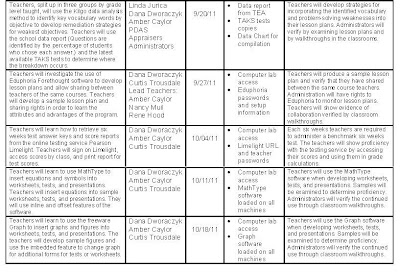



Click on the image to open for better viewing.
As a requirement for several of my Educational Leadership courses for Lamar University, I have created this blog. The intent is to document my journey and share my experiences with others who are traveling the same road.